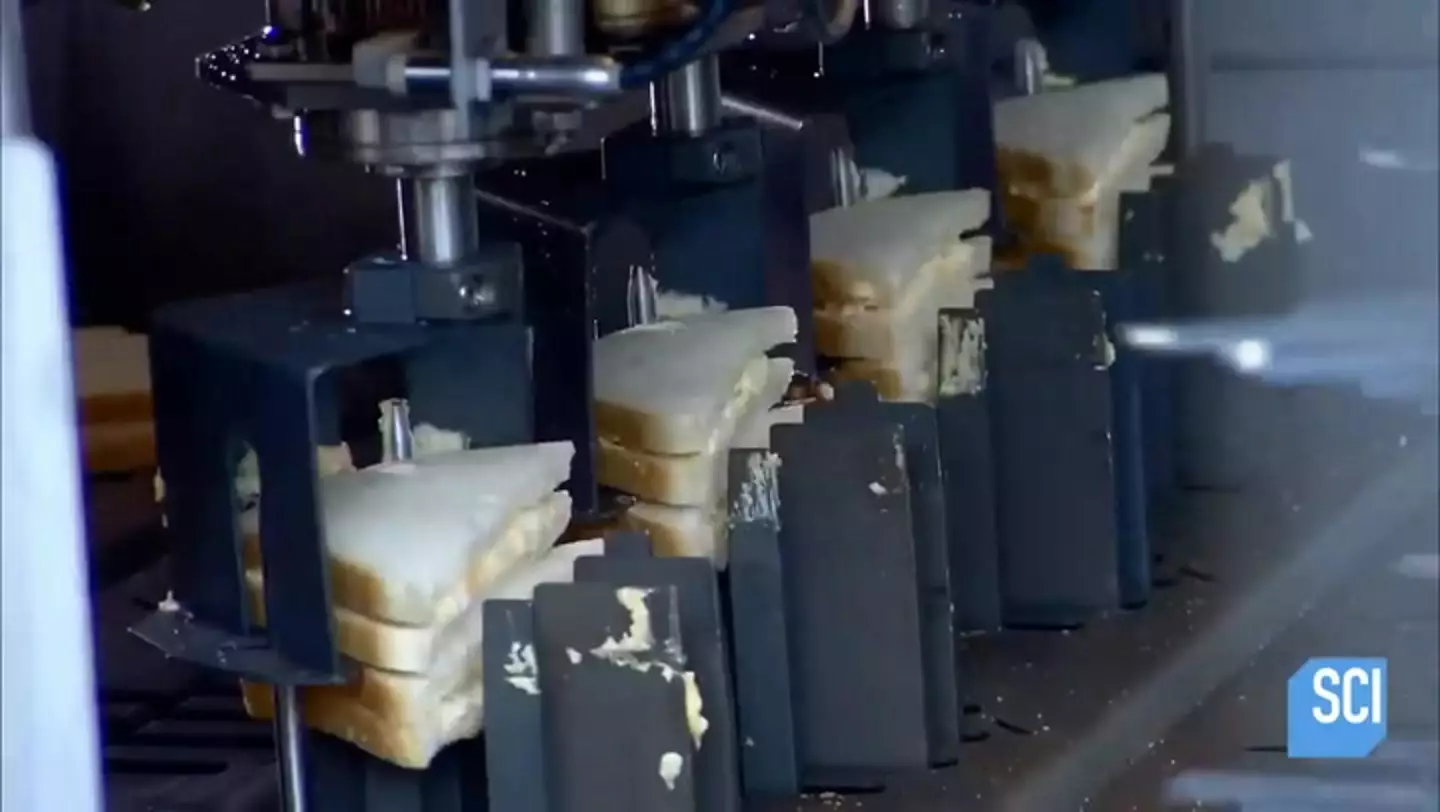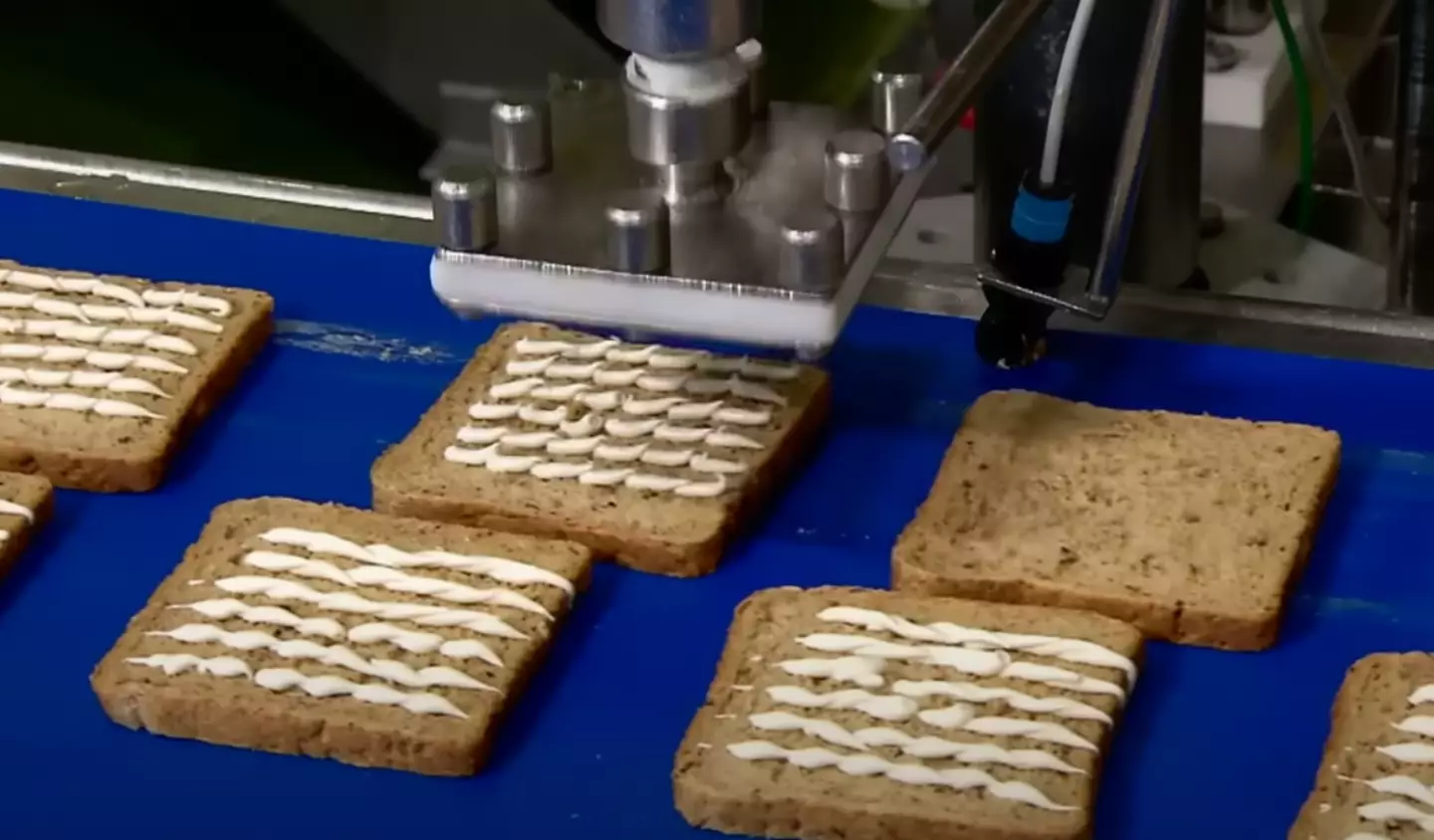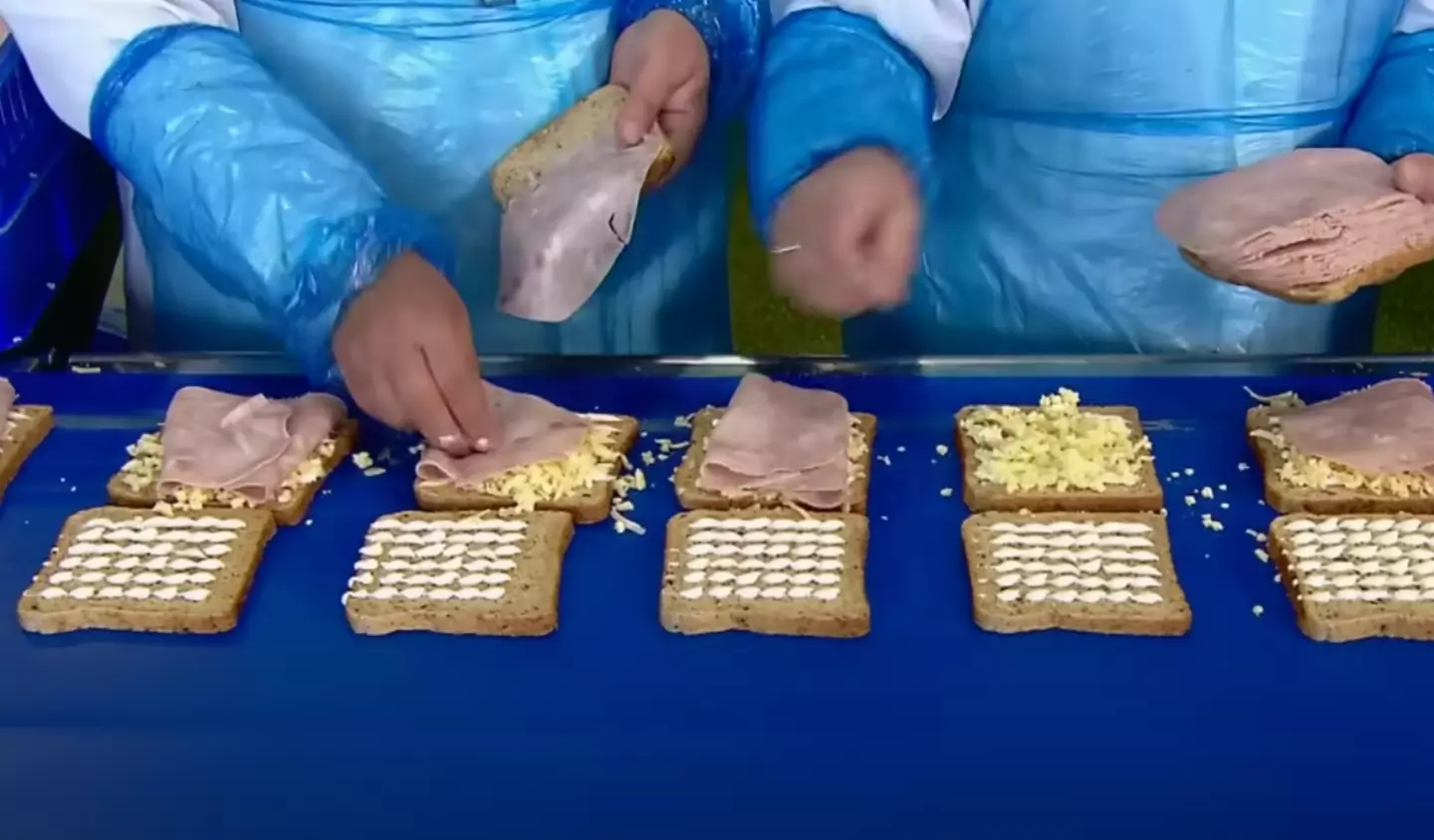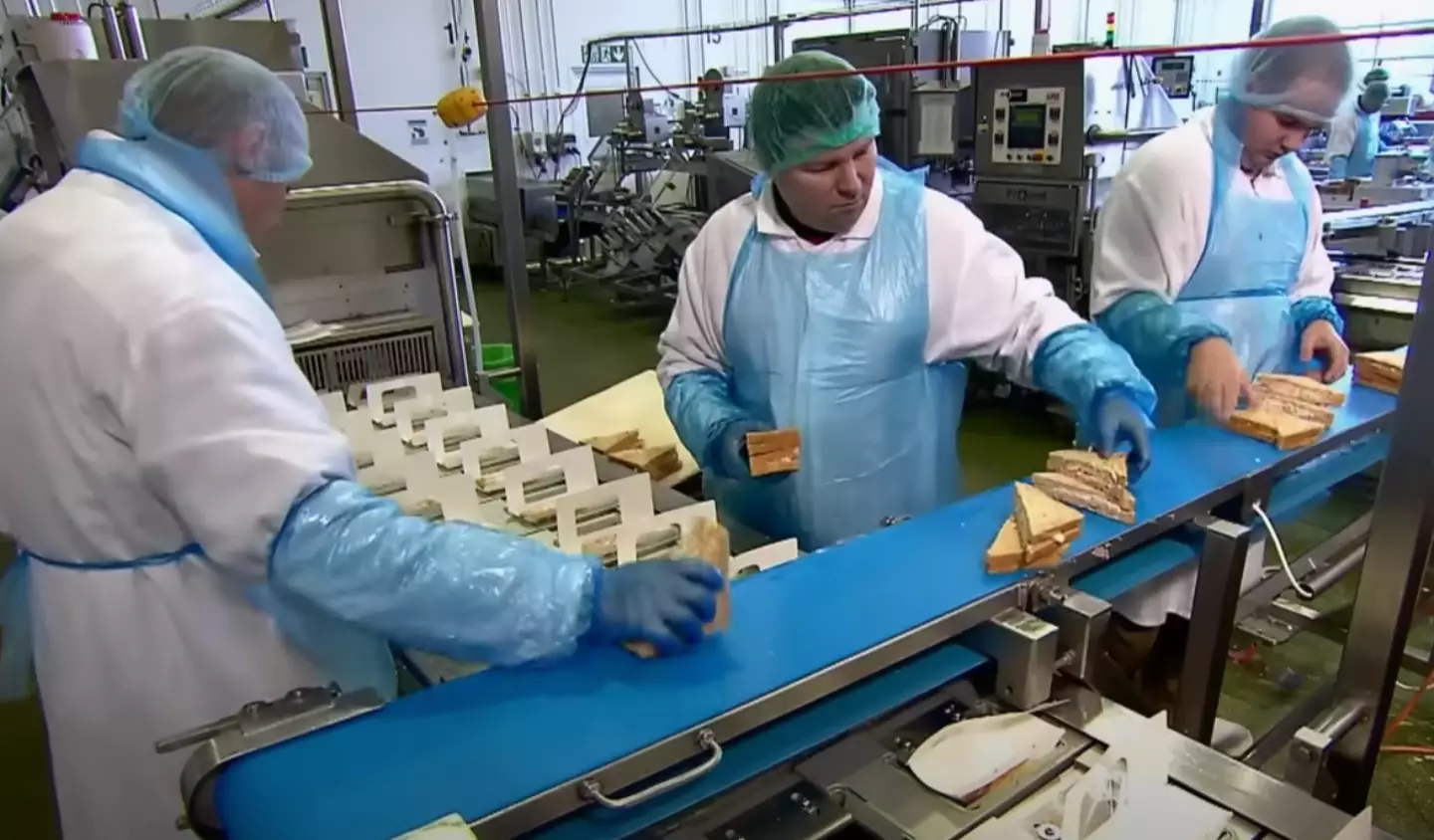People are only just finding out how pre-packaged sandwiches are actually made, all thanks to a handy little behind-the-scenes factory video showing how much of it is constructed via machine and how much is done by hand.
While sandwiches might be one of the easiest things to make at home, when they have to be crafted on an industrial scale, things are a little less straightforward.
After all, it may not take long for you or I to butter a slice of bread, cut up some cheese and place it down with a slice of ham, before tucking it all under a second bread slice and cutting it into two neat triangles.
Advert
But when you’ve got hundreds to do, I imagine that simple process becomes very tedious indeed – as anyone who’s got a kids’ party to cater for, or a picnic for 20 to set up.
That’s why pre-packaged sandwiches call upon the monotonous skill of robots, who not only get the job done in record time, but also don’t moan as they layer up their 500th sandwich of the day.
In a video from the Science Channel’s How It’s Made, which was posted on its YouTube channel last year, we see just how complex the process is.

Advert
The first step is for someone (a real-life human being, in this instance) to load fresh sliced bread into an automated machine, visually inspected each piece as they do so and removing any with holes or other flaws.
The machine then separates the slices, before an internal roller spreads melted butter onto each.
After this, the machine then pushes the bread through the production line to the next stage: mayonnaise!

Advert
“An automated depositor squirts on the quantity and type of mayonnaise the customer requested,” the documentary explains.
For the ‘more specific’ fillings, however, we welcome some of those real-life human beings again.
They manually lay on ingredients like cold cuts or grated cheddar cheese, with ham sliced methodically by a machine before being placed inside.

Advert
Next, the real-life human beings close up the sandwiches and stack them in piles of two.
The belt then brings the sarnies to a mechanised cutter, which works like a ‘reciprocating saw’, with the vertical blade ‘oscillating at high speed as the sandwich travels through it’.
The stacked halves on each side will be packaged together as one sandwich.
The documentary says that some sandwich varieties produced in larger quantities, meanwhile, are made on a fully automated assembly line.
Advert

In this case, a machine sucks up the bread slices and places them onto an assembly line, where positioning plates adjusts the slices to be perfectly placed under nozzles dispensing the ingredients – like egg salad, for example. Vom.
“At the next station, robotic arms lined with suction cups grab the empty slices and flip them over onto the filled slices,” the documentary continues.
“Next stop, an ultrasonic knife. It slices the sandwiches in two using vibrations produced by high frequency sound waves. This cutting methods creates a cleaner edge.
And now here’s the actually pretty clever part: “Next, robotic arms pick up each sandwich, spin it around and stack it onto the other half.”
The robot then passes them on to the sealing and labelling stage, while over on the semi-automated line, real-life humans step in to stack them manually and place them in plastic-lined cardboard packages.

While some people were mildly impressed, others vowed to avoid pre-packaged butties in the future.
"That's really interesting, I've always wondered how premade sandwiches/wraps are made!" one said on YouTube.
"It's been years since I've bought a premade sandwich and after seeing this I can confidently say it will be many more years to come before I buy another," another wrote.
A third said: "My biggest take away is that the two halves in the pack aren't from the same sandwich."
Topics: Food and Drink, Technology